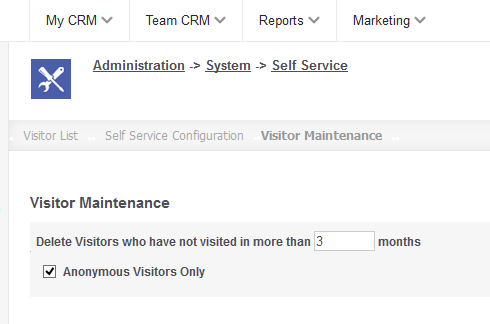CRM Visitors: Difference between revisions
From Customer365 for SageCRM
No edit summary |
No edit summary |
||
| (One intermediate revision by the same user not shown) | |||
| Line 24: | Line 24: | ||
---- | ---- | ||
Trigger on visitor table that sets the users email address as the logon id (the logon id field should be expanded to | Trigger on visitor table that sets the users email address as the logon id (the logon id field should be expanded to make sure the data fits before using this) | ||
create trigger [dbo].[UpdateLogonId] | create trigger [dbo].[UpdateLogonId] | ||
on [dbo].[Visitor] | on [dbo].[Visitor] | ||
after insert, update | after insert, update | ||
as | |||
as | begin | ||
set nocount on; | |||
begin | declare @visiId int | ||
DECLARE @Email VARCHAR(50) | |||
select @visiId = INSERTED.Visi_VisitorId | |||
from inserted | |||
select @Email = INSERTED.Visi_EmailAddress | |||
from inserted | |||
update Visitor | |||
SET Visi_LogonId = @Email | |||
WHERE Visi_VisitorId = @visiId | |||
END | |||
END | |||
Latest revision as of 14:37, 30 May 2019
Within CRM itself you can view any person records recorded as registered visitors in CRM
To do this logon as a user with admin rights
Click
Administration -> System -> Self Service
Uncheck the "Anonymous visitors only" checkbox and click filter to see the people
Visitor maintenance is available at
See also
"Sage CRM 7.2: Administering Self Service Visitors"
Trigger on visitor table that sets the users email address as the logon id (the logon id field should be expanded to make sure the data fits before using this)
create trigger [dbo].[UpdateLogonId]
on [dbo].[Visitor]
after insert, update
as
begin
set nocount on;
declare @visiId int
DECLARE @Email VARCHAR(50)
select @visiId = INSERTED.Visi_VisitorId
from inserted
select @Email = INSERTED.Visi_EmailAddress
from inserted
update Visitor
SET Visi_LogonId = @Email
WHERE Visi_VisitorId = @visiId
END


